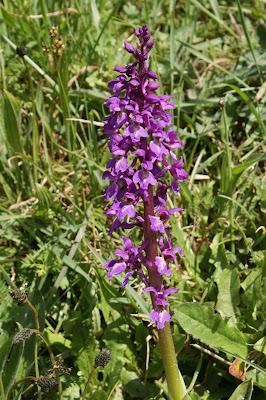There were the hotels catering for commercial travellers, and the places that catered for weddings etc, but the food was boring, overcooked, and unimaginative. A few pubs were moving on from the stale sandwiches and plastic pies, but then only into simple grills and fry ups. Having to move around the country for my work, I despaired of ever finding any reasonable place to eat with good food anywhere in the country. Even in London, there were not that many restaurants, other than in the very grand hotels like the Dorchester and the Ritz, way outside my income.
There was a feed back loop going on, of course. Because there was no British tradition of eating out regularly, there was no demand for restaurants. Because there were no restaurants, no one went out to eat.
I remember at that time a German firm was looking at various places to set up a new, large factory, and Birmingham council was trying hard to attract them there, rather than somewhere in Italy or France. One of what the council saw as a strong attraction was the low wages that would have to be paid to get the right staff. The German management looked at the figures, and said 'But how can one of the workers afford to take his family out for dinner on Saturday night on those wages?' Birmingham said that no working people would do that, or want to, or expect to be able to. The Germans said that they did not want to be in the business of exploiting people, and that they wanted employees with more ambition and life, and set up their factory somewhere else.
In the 70s, most British Francophiles knew about the Relais Routiers organisation. All the lorry drivers (routiers) used their guides to the best roadside restaurants catering for them, by having very large car/lorry parks, and providing very good lunches at reasonable prices. The idea that lorry drivers would expect to have a good quality, freshly prepared three or four course lunch every day was pretty extraordinary. That most of the meals cost very little in Brtisih terms, and usally included wine in the price, was a revelation. As was the fact that the drivers wanted to sit down at a table with others, and take two hours over their lunch. For us deprived Brits, particularly as for part of the 70s we were only allowed a very small amount of foreign currency each year (you collected it from a bank who recorded how much in your passport, and there were no credit cards), these relais were enough to justify a visit to France in themselves.
In the 70s, most British Francophiles knew about the Relais Routiers organisation. All the lorry drivers (routiers) used their guides to the best roadside restaurants catering for them, by having very large car/lorry parks, and providing very good lunches at reasonable prices. The idea that lorry drivers would expect to have a good quality, freshly prepared three or four course lunch every day was pretty extraordinary. That most of the meals cost very little in Brtisih terms, and usally included wine in the price, was a revelation. As was the fact that the drivers wanted to sit down at a table with others, and take two hours over their lunch. For us deprived Brits, particularly as for part of the 70s we were only allowed a very small amount of foreign currency each year (you collected it from a bank who recorded how much in your passport, and there were no credit cards), these relais were enough to justify a visit to France in themselves.
The Relais Routiers organisation is still going strong. The difference these days is that wine is not always included. The same tradition of good, fixed price, cheap meals of course is still important in France. Every where you go, there are bistros, cafés, auberges and restaurants with signs saying 'Menu Ouvrier' - workmens' menu - usually at around 8 to 12€ all in. Because of the catastrophic exchange rate, prices in France seem high to us, but are not in terms of French earnings. 8-12€ is in French terms really equivalent to about £5-6 - the same as a takeaway sandwich and coffee in London. But what you get is a choice of starter, such as a goat cheese salad, paté, hard boiled eggs with mayonnaise, or similar, or a buffet of all of them, followed by a choice of a steak, or pork chop, or beef stew or regional specialities, then two or three pieces of different cheese, then a dessert such as créme brulée, chocolate mousse or apple pie. Of course as much fresh bread as you want. In many places there are bottles of wine on the table, usually ordinaire, and you pay for (approximately) how much you drank: can be as much as 3€ for the whole bottle. Compare all this with a plateful of crap 'n' cholestorol for the same price in a greasy spoon truckstop in the UK.
Britain has improved beyond anything I could have contemplated thirty five years ago. There are many good, decent restaurants serving real food almost everywhere. Of course there are chains of rubbish places selling artifical pizzas, microwaved and boil in the bag ready meals, and other pretend food (tip: avoid places where you see a Brakes Bros or 3665 lorry making a delivery - they will be serving mass produced stuff in most cases). An aspect of this is that you can now eat as well in England as France, if you are careful, and at the same prices. That is a miracle.





























